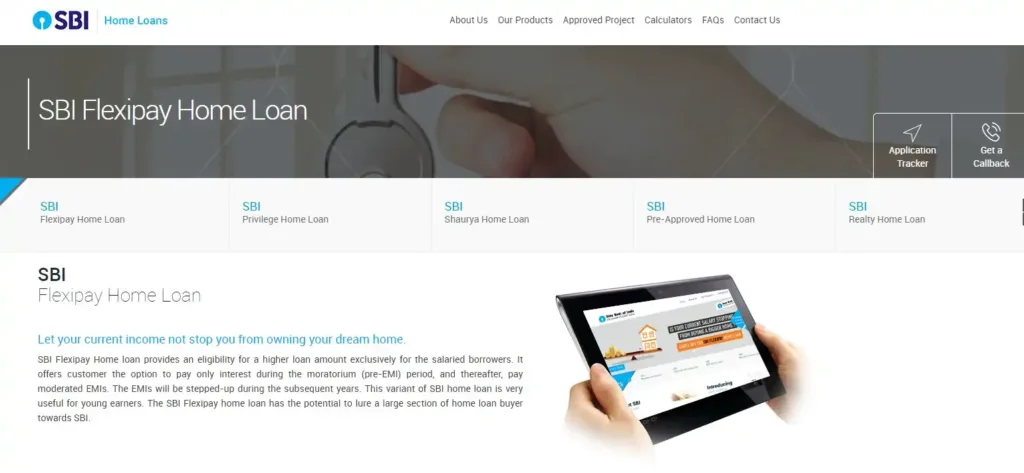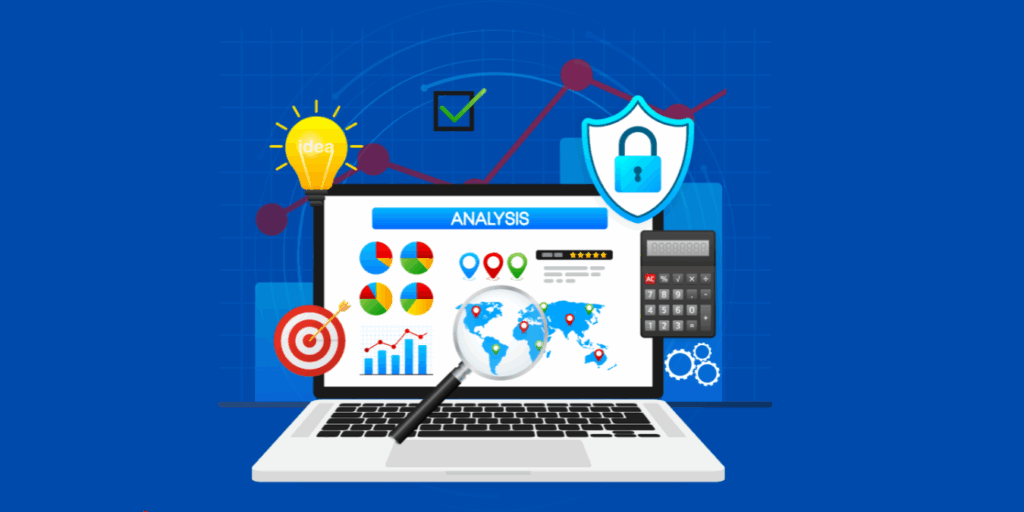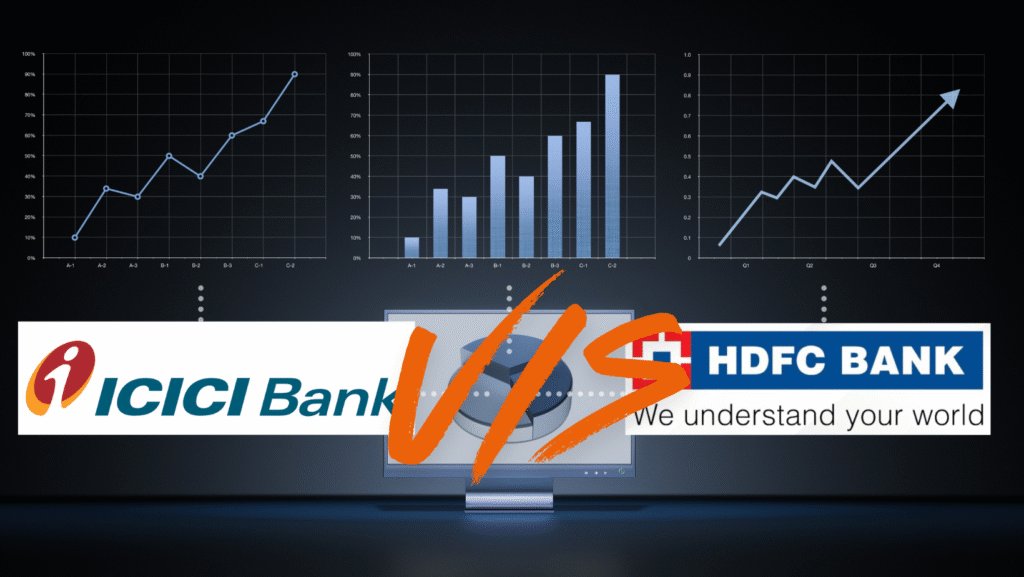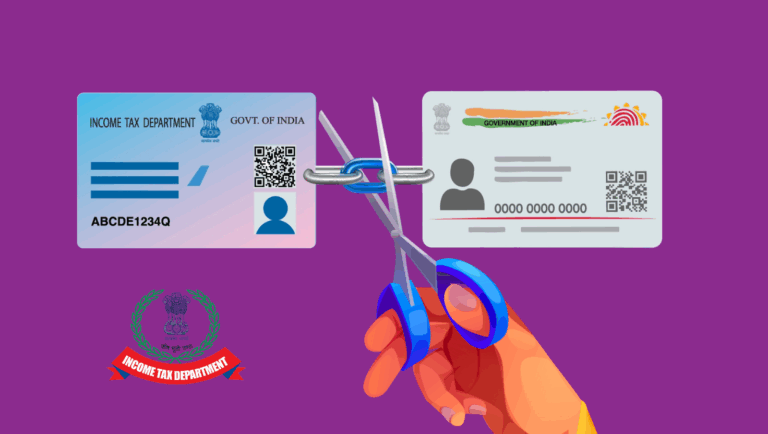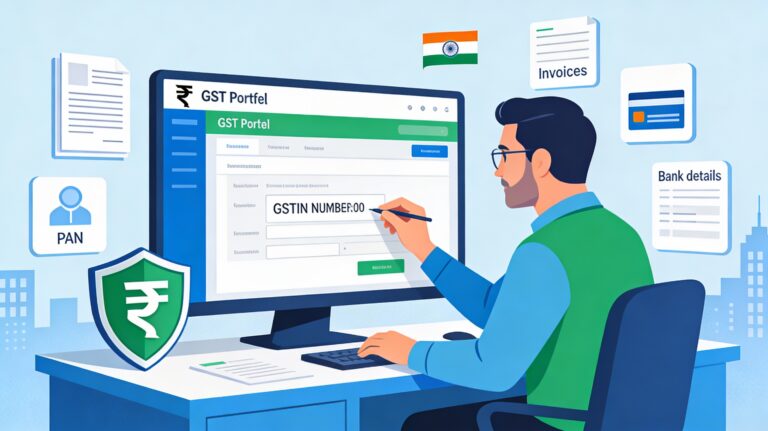
The Income Tax Department’s AI-powered cross-verification targets old regime claims, scrutinizing Section 80C, HRA, and 80D deductions with real-time data from banks and insurers. With ₹27 lakh crore in taxes collected, mismatches could freeze your refunds. Will your ITR survive this digital audit? Uncover expert tips to navigate Faceless Assessment 2.0, avoid penalties, and secure swift refunds in AY 2025-26. Stay compliant and conquer the new tax era with our comprehensive guide!
The Income Tax Department has rolled out enhanced cross-verification measures, leveraging real-time data matching to scrutinize deductions and exemptions like never before. This initiative, driven by advanced digital systems, aims to foster transparency and curb discrepancies in Income Tax Returns (ITRs). As we delve into this transformative shift for Assessment Year (AY) 2025-26, we’ll explore how these changes affect salaried professionals, freelancers, and investors across India—from bustling metros like Mumbai and Delhi to emerging hubs in Tier-2 cities.
Whether you’re claiming House Rent Allowance (HRA), investments under Section 80C, or health insurance premiums under Section 80D, precision is now paramount. With the ITR filing deadline extended to September 15, 2025, as announced by the Income Tax Department amid ongoing digital upgrades, taxpayers have a brief window to align their claims with verifiable records. This blog post, crafted from an Indian viewpoint, unpacks the mechanics of this system, its rationale, compliance essentials, and practical strategies to navigate it seamlessly. Drawing on the latest 2025 updates from the Central Board of Direct Taxes (CBDT) and real-world insights, we’ll equip you with the knowledge to file confidently and avoid pitfalls.
The Evolution of Tax Verification in India
India’s tax verification journey has transitioned from manual audits to a tech-savvy ecosystem, reflecting the nation’s Digital India ambitions. Historically, ITR scrutiny was limited to selective cases under the Computer Assisted Scrutiny Selection (CASS) system, where only high-risk returns faced deeper probes. For the average salaried employee in cities like Bangalore or Chennai, submitting Form 16 from their employer was often sufficient, with minimal post-filing hassles.
However, the tide turned with the introduction of digital tools. The Faceless Assessment Scheme, launched in 2020 and upgraded to version 2.0 in 2023, eliminated human bias by conducting assessments virtually. By 2025, this has evolved further with real-time integration of data sources. The Annual Information Statement (AIS), introduced in 2021, now aggregates comprehensive financial details—including interest income, dividends, and property transactions—reported by banks, employers, and other entities.
Complementing AIS is the Taxpayer Information Summary (TIS), a personalized dashboard that summarizes your tax profile for quick cross-checks. PAN-Aadhaar linkage, mandatory since 2019, serves as the backbone, enabling seamless correlation of transactions across platforms. As per CBDT notifications in early 2025, these tools are now fully operational for AY 2025-26, processing over 27 lakh crore in gross direct tax collections as of March 2025— a 15% jump from the previous year, highlighting the system’s efficiency.
This evolution isn’t just technological; it’s cultural. In a country where tax compliance has historically lagged, with only 7-8% of the population filing returns, these measures aim to build trust. For instance, during the COVID-19 era, relaxed verifications led to a surge in bogus claims, prompting the government to tighten reins. Today, with UPI transactions crossing 12 billion monthly and Aadhaar-linked bank accounts exceeding 1.3 billion, every financial move leaves a digital trail, making evasion tougher.
Key Milestones in India’s Tax Digitization
- 2017-2019: Introduction of GST and e-way bills for indirect taxes, setting the stage for data sharing.
- 2020: Faceless appeals and assessments reduce corruption allegations by 40%, per government reports.
- 2023: AIS enhancements capture high-value transactions in real-time.
- 2025: Full rollout of automated cross-verification for old regime claims, as clarified in CBDT circulars from June 2025.
This shift empowers honest taxpayers with faster refunds—processed within 10-15 days for compliant returns—while deterring fraud, aligning with Prime Minister Modi’s vision of a self-reliant, transparent economy.
IndiGo, SBI Card Launch Co-Branded Credit Cards: 7% Rewards Beat Rising Travel Costs
Smart Homebuying Starts with ICICI Bank Home Loans
SEBI’s ‘@valid’ UPI: Will It Stop ₹10,000 Cr Fraud in India’s Stock Market?
Why Are Rent Prices in Delhi, Mumbai & Bengaluru, Kolkata, and Other Metro Cities Skyrocketing? How Can the Issue of Affordability Be Addressed?
Why Is Cross-Verification Being Implemented in 2025?
The CBDT's decision to intensify cross-verification stems from a multi-pronged strategy to modernize tax administration. In June 2025, the Income Tax Department explicitly warned taxpayers via social media and portal notifications that all old regime claims would undergo real-time scrutiny, a move praised by experts for promoting equity.
Primary Objectives
- Curbing Inflated Claims: Overstated deductions under sections like 80C (up to ₹1.5 lakh for investments) have been rampant. The new system detects duplicates, such as claiming the same LIC premium twice, by matching against insurer databases.
- Preventing Refund Fraud: With refunds totaling ₹3.5 lakh crore in FY 2024-25, fake claims siphon resources. Real-time checks, as seen in July 2025 raids uncovering organized rackets, ensure only legitimate refunds are disbursed.
- Boosting Accountability: By aligning self-declarations with third-party data, the initiative encourages voluntary compliance. Non-compliance rates dropped 12% in pilot phases, per internal CBDT data.
- Encouraging Accurate Disclosures: The threat of instant flags motivates precise reporting, reducing the need for manual interventions.
From an Indian lens, this addresses socioeconomic disparities. In a nation where the middle class bears a disproportionate tax burden—contributing 55% of personal income tax—fair verification ensures high-net-worth individuals can't exploit loopholes. Moreover, with India's GDP projected to hit $4 trillion by 2025-26, efficient tax collection funds infrastructure like the ₹1.1 lakh crore allocated for railways in Budget 2025.
Critics argue it burdens small taxpayers, but proponents highlight safeguards: No notices for minor mismatches under ₹5,000, focusing on substantial discrepancies. This balanced approach, informed by stakeholder feedback, positions India as a leader in AI-driven tax governance, akin to systems in Singapore and Australia.
How Income Tax Cross-Verification Operates
At its core, cross-verification is an automated process where your ITR data is pitted against a vast network of external records. For AY 2025-26, this operates via the Income Tax portal's backend, powered by AI algorithms that flag anomalies in seconds.
What Is Income Tax Cross-Verification?
It's the real-time reconciliation of claimed deductions with authenticated data from multiple sources:
- Banks: Interest on fixed deposits, loan EMIs, and savings account details.
- Insurance Providers: Premiums for LIC policies or health covers, verified via policy numbers.
- Employers: Salary breakdowns, HRA allowances, and Form 16 entries.
- Government Portals: EPF contributions from EPFO, tuition fees from education ministries, and even vehicle loans from mParivahan for Section 80EEB electric vehicle deductions.
- Other Entities: Mutual fund houses for ELSS investments and stock exchanges for capital gains.
If your Section 80C claim for ₹1 lakh in PPF doesn't match bank records, the system auto-flags it, potentially under Section 143(1) for intimation.
Types of Claims Checked Under the Old Tax Regime
The old regime, unlike the simplified new one (default since FY 2023-24), allows over 70 deductions, but now each faces rigorous checks:
- Section 80C: PPF, ELSS, NSC, and LIC—must itemize with folio/policy numbers.
- Section 80D: Health premiums up to ₹25,000 (₹50,000 for seniors), cross-checked with insurer portals.
- Section 24(b): Home loan interest up to ₹2 lakh, verified via bank sanction letters.
- HRA Exemptions: Rent receipts matched against landlord PAN and employer data.
- Loan-Related Deductions: Sections 80E (education loans), 80EE/80EEA/80EEB (housing/electric vehicles), requiring repayment proofs.
As per June 2025 ITR utility updates, new validation rules mandate detailed breakdowns, rejecting bulk entries.
Real-Time Mismatch Alerts
Upon ITR submission:
- The portal pre-fills data from AIS/TIS/Form 26AS.
- Post-upload, AI scans for mismatches—e.g., claimed HRA exceeding employer-reported allowance.
- Alerts via email/SMS under Section 143(1), with 30 days to respond.
- High-value flags (over ₹50,000 discrepancy) may withhold refunds, as seen in 2025 cases where 15% of returns faced queries.
This proactive mechanism, rolled out fully in 2025, has already reduced processing time by 20%, per CBDT stats.
Detailed Compliance Requirements for 2025
Compliance in 2025 demands granularity. Gone are vague claims; itemization is mandatory, as emphasized in ITR forms notified in August 2025.
Mandatory Detailed Breakdown of Claims
- Break down Section 80C: e.g., ₹50,000 ELSS (folio #12345), ₹60,000 LIC (policy #ABC123), ₹40,000 PPF (account #XYZ789).
- For HRA: Upload rent agreement, receipts, and landlord PAN if rent > ₹1 lakh annually.
- Absence of details triggers auto-rejection or queries, delaying refunds.
Documentation Protocol
For Each Deduction, Retain/Submit:
- HRA: Rent receipts, landlord’s PAN (if rent > ₹1 lakh/year), rental agreement, salary slips, HRA received and actual rent paid, work location proof.
- Section 80C: Fund statements (with folio numbers), LIC policy bonds, PPF passbooks.
- Section 80D: Policy document number, insurance company details.
- Loan Deductions: Sanction letter, bank statements, account/numbers, date of sanction, balance as on March 31.
- Other Investments: Tuition fee receipts, National Savings Certificate (NSC) details, Sukanya Samriddhi scheme passbook, etc.
Live Data Correlation
- All claims are directly mapped to feeds from financial institutions, employers, and portals.
- Any deviation invites automated scrutiny and possible demand for clarifications.
Compulsory Scrutiny Guidelines: 2025–26
The Central Board of Direct Taxes (CBDT) has announced that certain triggers now result in ‘compulsory scrutiny’ for returns filed in AY 2025–26:
- Survey or Search Cases: Returns of individuals or entities subject to income tax survey/search in the preceding two years.
- Claims Without Documents: Charitable institutions or NGOs claiming benefits without valid registration.
- Recurring Additions: Repeat claims previously disallowed by appellate authorities over several years.
- Tax Evasion Alerts: Any returns flagged by law enforcement or intelligence agencies.
- Notice Deadline: Notices must be issued by June 30, 2025. If not, scrutiny is invalid.
Penalties, Notices, and Consequences
What If Claims Don’t Match?
If claims in your ITR are flagged:
- The department may reject the deduction claim outright.
- Refunds get delayed until clarifications or documents are provided.
- Incomplete returns could be referred for faceless assessment, requiring extensive documentation and explanation.
- Intentional misreporting may invite heavier penalties and long-term scrutiny.
How to Prepare for Cross-Verification: Practical Tips
1. Review AIS/TIS and Form 26AS
- Always reconcile investment/expense claims against these statements before filing. These are now the government’s primary validation sources.
2. Avoid Ambiguity
- Only claim verifiable deductions. “Guesstimate” entries have become a red flag.
3. Retain All Proofs and Receipts
- Maintain digital and hard copies of all supporting docs for at least six years.
4. Consult a Professional
- Tax rules now require granular accuracy. A CA or financial planner’s review can ensure precision and protect against inadvertent non-compliance.
5. Use the Latest Portal Tools
- The Income Tax portal’s pre-fill, validation, and document upload features aid compliance. Leverage these for seamless and validated submission.
Special Considerations for Different Taxpayer Categories
Salaried Individuals
Form 16 is no longer the sole requirement—declarations to your employer should match actual investments. Any mismatch between employer-filed HRA or 80C data and your ITR invites automated queries.
Self-Employed, Freelancers, and Investors
Every deduction—from business expenses to Section 80C investments—must be backed by proof. Bank interest, capital gains, and rental incomes are all cross-checked against reported transactions.
Senior Citizens and Pensioners
Even with numerous concessions, documentation for sections like 80TTB (interest income), Section 80D (insurance premium), and medical expenses must be comprehensive.
The Indian Context: How This Impacts Taxpayers in 2025
Digital India Drives Transformation
With UPI, bank reporting, Aadhaar integration, and the Digital India initiative, Indian financial data has become both seamless and traceable. Taxpayers—especially the middle class, professionals, and investors—must future-proof their filings by maintaining robust documentation habits and adopting digital record-keeping.
Equity in Compliance
India’s cross-verification drive reduces the compliance burden for honest taxpayers by quickly clearing refunds for those whose claims align, while bringing non-compliance into the spotlight without harassment or endless paperwork.
Final Thought
The Income Tax Department’s 2025 move to cross-verify claims under the old tax regime signals a watershed moment in Indian tax compliance. This digital audit paradigm demands accuracy, documentation, and transparency—and rewards honesty and diligence with smooth refunds and low scrutiny. As India leapfrogs into a new era of faceless, tech-driven assessments, taxpayers are invited to adopt best practices and file clean, fully substantiated claims.
Stay prepared, embrace the new system, and ensure compliance at every step—because when your numbers match, your peace of mind is automatic.









